Table of Contents
ToggleCataract surgery and Aging: What patients should know
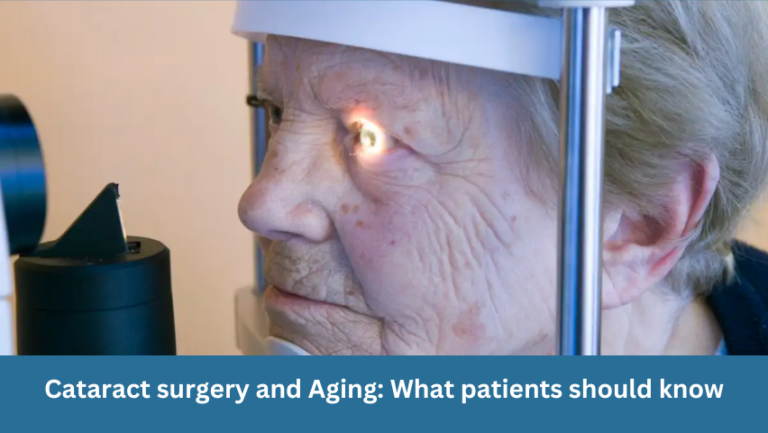
Aging brings wisdom and experience, but it can also bring certain health challenges, such as cataracts. Cataracts are a natural part of aging and a leading cause of vision impairment in older adults. Fortunately, modern cataract surgery offers a safe and effective solution to restore vision and improve the quality of life. This detailed guide covers everything seniors and their families should know about cataracts and cataract surgery.
What are cataracts?
Cataracts develop when the natural lens of the eye becomes cloudy, leading to blurred or impaired vision. This occurs due to protein buildup within the lens, making it less transparent. While cataracts can affect anyone, they are particularly common in older adults.
Types of cataracts:
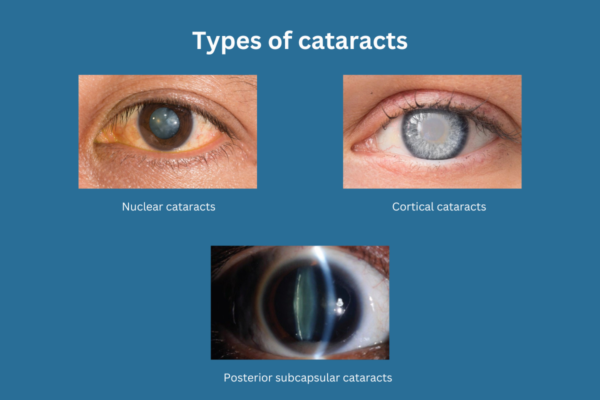
- Nuclear cataracts: Form in the center of the lens and cause near-sightedness (improved reading vision without glasses).
- Cortical cataracts: Affect the edges of the lens and cause glare or halos.
- Posterior subcapsular cataracts: Develop at the back of the lens, leading to difficulty reading and sensitivity to light.
Why do cataracts develop with age?

Aging is the most significant risk factor for cataracts. As we grow older, the lens tissues naturally change, losing clarity. Other contributing factors include:
- Prolonged UV exposure: Lack of eye protection over time can accelerate cataract formation.
- Health conditions: Diabetes, obesity, and hypertension are linked to higher cataract risk.
- Medications: Long-term use of corticosteroids can contribute to cataract development.
- Lifestyle choices: Smoking, poor diet, and alcohol consumption are known risk factors.
Symptoms of cataracts
Cataracts develop gradually, and symptoms may not be noticeable in the early stages. Common signs include:
- Blurry, cloudy, or dim vision.
- Difficulty seeing at night.
- Sensitivity to light and glare.
- Halos around lights, particularly at night.
- Frequent changes in glasses or contact lens prescriptions.
- Fading or yellowing of colors.
If these symptoms interfere with daily life, it is time to consult an eye specialist.
Why is cataract surgery necessary?
Cataract surgery is often necessary for older patients due to the natural aging process, which causes the eye’s lens to become cloudy and impair vision. Cataracts are common among older adults and can significantly affect daily activities, such as reading, driving, and recognising faces, leading to a reduced quality of life. Without treatment, cataracts can worsen, causing severe vision loss or even blindness.
Cataract surgery is the most effective treatment for restoring vision. During the procedure, the cloudy lens is removed and replaced with a clear artificial lens, allowing light to properly reach the retina. This surgery is typically safe, minimally invasive, and offers high success rates, with most patients experiencing significant improvements in vision.
For seniors, cataract surgery can prevent falls and accidents, which are more common with impaired vision. It also enhances overall safety and independence by allowing them to engage in everyday activities with ease. Additionally, the surgery may correct other vision issues, such as nearsightedness or farsightedness, further improving visual acuity.
Ultimately, cataract surgery helps seniors regain their ability to live independently, manage other health conditions more effectively, and enjoy a better quality of life. Early intervention can prevent further vision deterioration, making cataract surgery a crucial step in maintaining eye health as one ages.
When should surgery be considered?
- When vision loss affects daily activities like reading, driving, or watching TV.
- If glasses or contact lenses fail to improve vision clarity.
- If cataracts pose a risk to safety, such as increasing the likelihood of falls.
- When vision loss affects daily activities like reading, driving, or watching TV.
What happens during cataract surgery?
Cataract surgery is a procedure to remove a cloudy lens from the eye, which causes blurry vision. The process begins with the administration of local anesthesia, typically in the form of eye drops, to numb the area. A tiny incision is made in the cornea, and a probe is used to break up the cloudy lens into small pieces. These pieces are then suctioned out of the eye.
Once the cataract is removed, an artificial lens, called an intraocular lens (IOL), is placed in the eye to help restore clear vision. The incision is small and usually doesn’t require stitches, as it is self-healing.
Steps of the procedure:
- Anaesthesia: Local anaesthesia is administered to numb the eye.
- Lens removal: The surgeon makes a tiny incision in the eye and uses ultrasound waves to break up the cloudy lens.
- Lens replacement: An artificial intraocular lens (IOL) is inserted to replace the natural lens.
- Closure: The incision heals naturally without the need for stitches.
The procedure typically takes 20–30 minutes, and patients can return home the same day.
Types of Intraocular Lenses (IOLs)
Choosing the right IOL is an important decision that determines post-surgery vision.
1. Monofocal IOLs: Provide clear vision at one distance (near or far).
2. Extended Depth of Focus IOLs: Provide good functional vision for most daily activities (distance and intermediate distance)
3. Multifocal IOLs: Allow clear vision at multiple distances including distance, intermediate and near, for reduced dependence on glasses.
4. Toric IOLs: Correct astigmatism for sharper vision.
Your ophthalmologist will guide you in selecting the best option based on your vision needs.
Benefits of cataract surgery for seniors
- Restores clear vision, enabling better independence.
- Reduces the risk of falls and accidents.
- Improves confidence and social interactions.
- Enhances the ability to perform hobbies and daily tasks.
- Provides long-term improvement in vision quality.
Preparing for cataract surgery
Proper preparation ensures a smooth surgical experience and recovery.
Steps to prepare:
- Pre-surgery consultation: Before the surgery, you’ll have a consultation with your ophthalmologist. They will examine your eyes and discuss your medical history, including any medications you’re taking. You may undergo tests to measure your eye’s size and shape to determine the correct lens implant for you.
- Discontinue certain medications: Some medications, especially blood thinners, may need to be paused before surgery. Follow your doctor’s instructions closely, as they may advise you to stop taking certain medications a few days before the procedure.
- Arrange transportation: Cataract surgery is typically performed under local anaesthesia, so you won’t be put to sleep. However, you may receive sedation which can make you feel groggy afterward, so it’s essential to arrange for someone to drive you home after the surgery.
- Avoid food & drink: You will likely be instructed not to eat or drink for a certain period before your surgery, usually about 12 hours. This is especially important if you’re receiving sedation.
- Wear comfortable clothing: On the day of the surgery, wear comfortable clothes. Avoid makeup, lotions, or perfumes, as they can irritate your eyes or affect the surgical area.
- Post-surgery care: After the surgery, you’ll need to follow instructions carefully to protect your eyes. This might include using prescribed eye drops, wearing an eye shield, and avoiding activities that could strain your eyes, such as bending over or heavy lifting.
Recovery after cataract surgery
Recovery is usually fairly rapid and uneventful for most patients.
Post-surgery guidelines:

- Use prescribed eye drops to prevent infection and promote healing.
- Avoid strenuous activities, heavy lifting, and bending over for at least one week.
- No driving for a number of days (your doctor will advise in more detail).
- Protect the eyes from bright light and dust using sunglasses or an eye shield.
- Follow up with your surgeon for regular checkups.
Vision typically improves within a few days, though complete healing may take a few weeks.
Is cataract surgery safe for seniors?
Yes, cataract surgery is considered highly safe and effective for seniors. The risk of complications is minimal, especially when performed by experienced surgeons. Proper post-operative care and adherence to medical advice further reduce risks.
Why choose Clarity eye surgeons for cataract surgery?
At Clarity Eye Surgeons, we specialise in providing advanced cataract treatments tailored to seniors’ unique needs. Our team of highly skilled surgeons uses state-of-the-art technology to deliver optimal results with minimal downtime. We prioritise your comfort and vision at every step, from initial consultation to post-surgery care.
Conclusion
Aging does not have to limit your vision or quality of life. Cataract surgery is a safe, effective, and transformative procedure that restores clarity to your world, enabling you to enjoy your golden years to the fullest. By understanding the symptoms, causes, and benefits of cataract surgery, seniors and their families can make informed decisions about their eye health. Schedule a consultation with Clarity Eye Surgeons and let our experienced team guide you through the journey to clearer, brighter eyesight. Contact us now to learn more or book an appointment!
Author bio
Dr Parth Shah is a leading ophthalmologist in Canberra, specialising in cataract surgery. With extensive training and experience, he is renowned for his expertise in the field. Dr Shah is dedicated not only to performing successful surgeries but also to patient education. His compassionate approach, combined with technical proficiency, has earned him the trust and gratitude of countless patients. He is a true advocate for eye health and a trusted name in the Canberra ophthalmology community.
FAQs
No, cataracts do not return after surgery. However, patients may develop a condition called posterior capsule opacification (PCO), which can cause vision to become cloudy again. This is treatable with an in-office laser procedure.
While there are no proven non-surgical treatments to reverse cataracts, a healthy lifestyle, UV protection, and regular eye exams can help slow their progression.
Most patients can return to light activities, like watching TV or walking, the day after surgery. However, strenuous activities should be avoided for at least a week or as recommended by the surgeon.
Delaying surgery can lead to worsening vision, increased risk of falls or accidents, and potential complications, such as hyper-mature cataracts, which are more challenging to remove.
Look for an experienced ophthalmologist with positive patient reviews, advanced surgical technology, and a proven track record of successful outcomes. Consultations can help assess your comfort level with a specific surgeon.
Depending on the type of intraocular lens (IOL) chosen, you may still need glasses for certain activities, such as reading or driving.
Discuss your concerns with your surgeon during the consultation. Knowing the procedure is safe and painless, and learning about the steps involved, can help ease anxiety. Some centers offer mild sedatives to help patients relax on the day of surgery.
The cost of cataract surgery varies depending on the type of IOL, technology used, and location where the surgery is performed.
Other blogs related to Cataract

Laser vs Traditional cataract surgery: Which is better?
Laser vs Traditional cataract surgery: Which is better? Cataract surgery is one of the most commonly performed eye procedures worldwide. With advancements in medical technology,

Cataract surgery & Aging: What seniors should know?
Cataract surgery & Aging: What seniors should know? Cataract surgery is one of the most commonly performed surgeries worldwide, particularly for seniors. As we age,

Cataract surgery and Aging: What patients should know
Cataract surgery and Aging: What patients should know Aging brings wisdom and experience, but it can also bring certain health challenges, such as cataracts. Cataracts

The impact of cataract surgery on night vision
The impact of cataract surgery on night vision The impact of cataract surgery on night vision Cataracts are one of the leading causes of vision

Cataract surgery myths debunked
Cataract surgery myths debunked Cataract surgery is a highly effective and routine procedure that helps restore clear vision, yet many people are hesitant due to
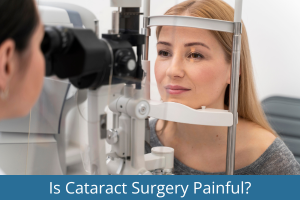
Is Cataract Surgery Painful?
Is Cataract Surgery Painful? Embarking on the journey towards better vision often raises concerns and questions, especially when it comes to surgical interventions. One such

Everything about Cataracts & Surgery: A detailed guide
Everything about Cataracts & Surgery: A detailed guide Cataracts are a common worry, especially as we get older. Imagine your eye’s natural lens gradually getting

Choosing Your Path to Cataract Surgery: Private or Public Practice
Choosing Your Path to Cataract Surgery: Private or Public Practice Introduction Deciding to have cataract surgery is a big deal, and opting to have the

A Comprehensive Guide to Choosing the Right Intraocular Lens (IOL) for Cataract Surgery
A Comprehensive Guide to Choosing the Right Intraocular Lens (IOL) for Cataract Surgery Introduction Cataract surgery is a common and highly effective surgical procedure aimed

Cataract Surgery in Patients with Diabetes: A Comprehensive Guide
Cataract Surgery in Patients with Diabetes: A Comprehensive Guide Cataracts are a common concern for many, but for individuals with diabetes, the journey through cataract
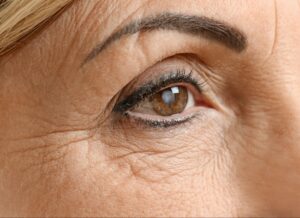
Driving With Cataract and After Cataract Surgery
Driving With Cataract and After Cataract Surgery Driving is a significant part of our lives, offering freedom and independence. But to drive safely, one’s vision
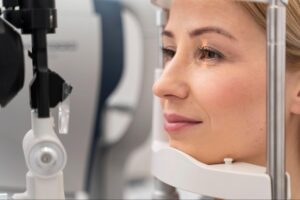
Cataract Surgery in Patients with Glaucoma
Cataract Surgery in Patients with Glaucoma Welcome to Clarity Eye Surgeons, where your eye health is our top priority. In this article, we will explore

The Complete Guide to Cataract Surgery Recovery: Timeline, Tips, and What to Expect
The Complete Guide to Cataract Surgery Recovery: Timeline, Tips, and What to Expect Introduction Cataract surgery is a common and highly effective surgical procedure aimed

How to Choose a Cataract Surgeon: A Comprehensive Guide
How to Choose a Cataract Surgeon: A Comprehensive Guide When it comes to your eye health, selecting the right cataract surgeon is of utmost importance.

Cataract Surgery in Children: Symptoms, Causes, Procedure, Risk and Recovery
Cataract Surgery in Children: Symptoms, Causes, Procedure, Risk and Recovery Introduction Cataract surgery in children is a delicate procedure that can restore a child’s
